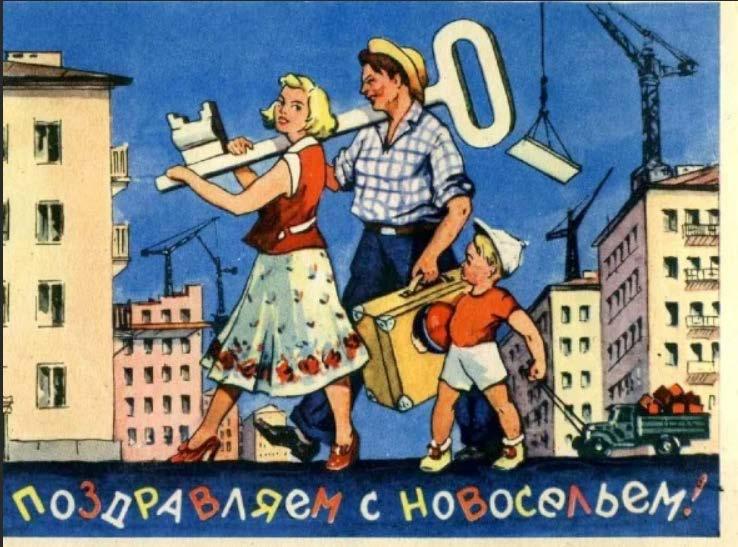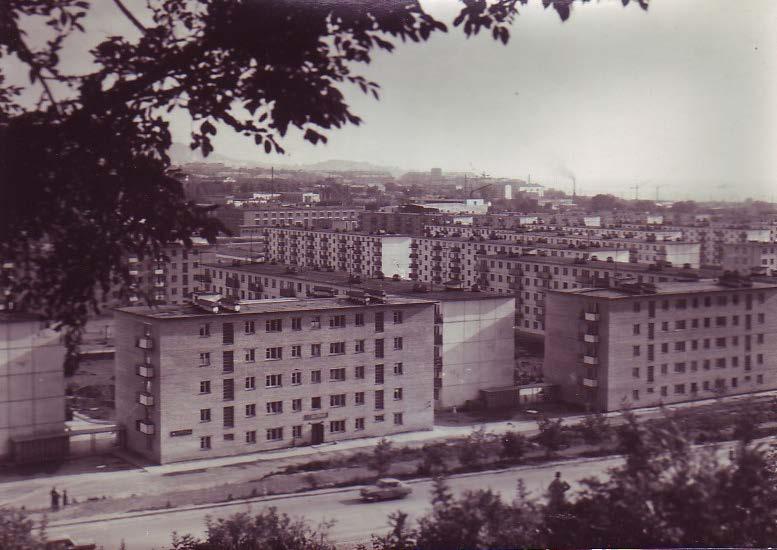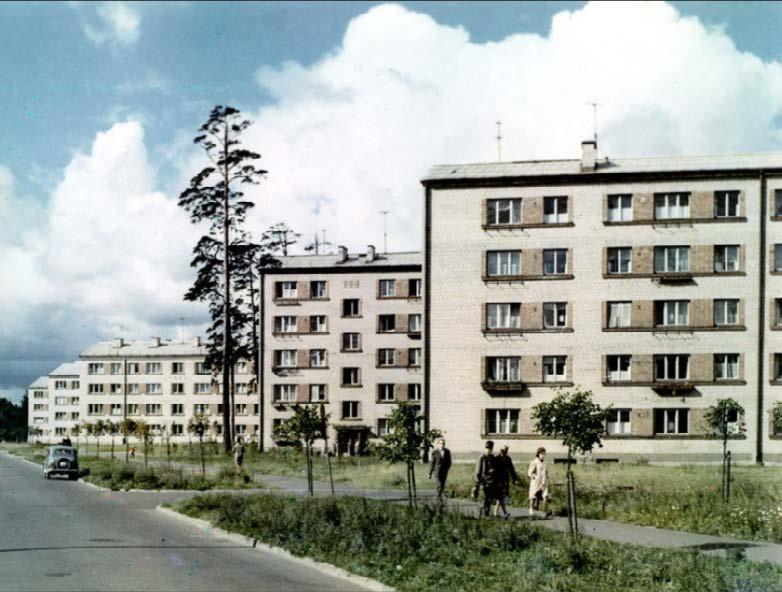
6 minute read
Soviet Dreams
Spotlight
Words Jānis Bērziņš
Advertisement
Imagine this situation: you and your friends get together on New Year’s Eve in Moscow. You get drunk, really drunk, and eventually pass out. Two of your friends are still awake and remember that one of you must go to Leningrad (nowadays Saint-Petersburg) and needs to catch a plane, but they don’t remember who. So they decide to put you on the plane.
Eventually you wake up, and you’re still drunk. You step out of the plane, staggering and holding to other people, and after a while realise that you’re in an airport. You think that, obviously, you’re in Moscow and probably just said goodbye to the friend who had to go to Leningrad. So you call a cab, say your address and let the car movement guide you in a peaceful sleep. You arrive at your building, go to the elevator and then to your apartment door, open it with your key, enter the apartment and take off your clothes. You go to the bedroom and fall asleep, until…
Until the real owner of the apartment comes home and wakes you up, because you’re an intruder in her home. However, you still believe that you are in your apartment in Moscow and that she has intruded your apartment!
Sounds funny and impossible, doesn’t it?
This story is familiar to millions of people from post-soviet countries because it is the plot of a TV Mini-series called The Irony of Fate (Ирония судьбы, или С лёгким паром) by director Eldar Ryazanov, first aired on January 1, 1976. This movie can still be seen on TV and has become a New year’s eve tradition in many households, possibly because this love story (the main characters eventually fall in love), depicts the reality of soviet mass planning and decisions that shaped the lives of millions of people from the Baltic Sea to the Pacific Ocean. To understand how this absurd story could somehow be considered a reality, it is important to get an insight into the Soviet Dream and what happened in the Soviet Union after World War II. In short, the main ideology of socialism in the Soviet Union was based on providing welfare for the working class, the so-called proletariat. According to Stalin’s industrialisation plan, many state-owned factories were built in cities, providing work for people who mostly came from remote and rural areas. This started a housing crisis in the Soviet Union because at the same time the Communist Party had declared that every Soviet citizen had a right to live in an apartment with the necessary amenities. However, the reality was far from the dream. Many years after the war millions of people were still living in fast-built wooden barracks without drainage, tap-water, and with toilets on the street, or in communal apartments in pre-war buildings that used to belong to bourgeois but now housed a family in each room. Undoubtedly, there was a need for a fast and cheap solution on how to provide the new soviet people the apartment that they had the right to.
Until the 1950s in Soviet Union apartment buildings were built in “Stalin’s style” – neoclassical, monumental brick buildings with ornaments, spacious apartments and quality materials. However, this process was costly and time-consuming. In 1955 The Central Committee of the Communist Party issued a decree that permanently and instantaneously shaped the architectural and
New Micro-rayon in Moscow, USSR with old, wooden barrack in the forefround.

"Congratulations with the new living space (apartment)." Postcard from 1960s, praising the new life in standartized neighborhoods.


Vladivostok (left) Vs. Riga (right). Postcards from 1960s. The distance between these cities is 9600 km, however, the building design is (almost) the same.
building practice in the whole union. This decree forbade the use of redundant ornaments and pushed the use of modern, affordable and efficient buildings. One can argue that, on this day, the Soviet standardised-block house was born. The effect of this decree is also well-explained in the opening scene of The Irony of Fate. In an animation it shows how buildings built as part of the same project and designed by the same architects, usually based in Moscow or Leningrad, are built in different landscapes and climate conditions. The result of this process was newly built cities and neighbourhoods (called micro-rayons) with standardised apartment buildings that were copy-pasted in different scales and quantities across all of the Soviet Union. Was the soviet dream achieved?
The housing crisis was never solved. Moreover, the situation described in The Irony of Fate became highly possible, because the equality among the citizens was achieved by limiting freedom of choice in multiple aspects; this included apartment location, furniture, cutlery, and food, not to mention freedom of religion or speech. The soviet dream resulted in living spaces that looked like each other, same buildings with same furniture but in different cities. This socio-spatial situation has highly influenced generations of people who are, in some cases, still living in conditions like this but it is unique. Thus, the research and attention to these issues has not resulted in global action. 1 Although I was born after the collapse of the Soviet Union, I have also experienced living in an apartment building in one of the micro-rayons of Riga, Latvia – one of the post-soviet countries in Europe. Fresh air, greenery, public transport and connections to the city centre were the benefits of living there, despite the low-ceiling height and thin walls that allowed me to participate in my neighbours’ arguments. I also don’t miss the times before Google Maps or Waze when I had to get creative on giving the correct directions to my apartment building, or the times when I got lost in partly-lit courtyards looking for the right door in between buildings that were the same.
This brings me to multiple questions that I keep asking myself from time to time: Was the Soviet Dream achieved by providing affordable (free) housing with necessary amenities for millions of people from Kaliningrad to Vladivostok? If so, was the price of limited freedom worth it? And how exactly did this dream influence people who are still living in these monotonous neighbourhoods? On the other hand, how different is the current western approach of designing western-style buildings in the Global South from the eastern Soviet approach? Is it possible to provide the necessary living conditions that we as civilisation share and agree on, allowing local and unique approaches?
I hope that in the future The Irony of Fate will still be only a movie, and that after a party in Moscow, London, or New-Delhi I will be able to open my apartment door without mistaking my city for another one.
Janis (@beerzin_janka) is a first year student of Urbanism at BK and a regular contributor of Atlanits magazine, where this article was first published. In collaboration with student association Polis (@polistudelft) and their publication Atlantis (@atlantis_tudelft), Bnieuws has re-edited and printed this article.
1. Life Together and Apart by New Theatre Institute of Latvia is an interesting research on the development of social housing in 20th century Latvia that also includes research on Soviet apartment buildings. This book touches the subject of mass-production and repetitiveness and its influence on residents.









